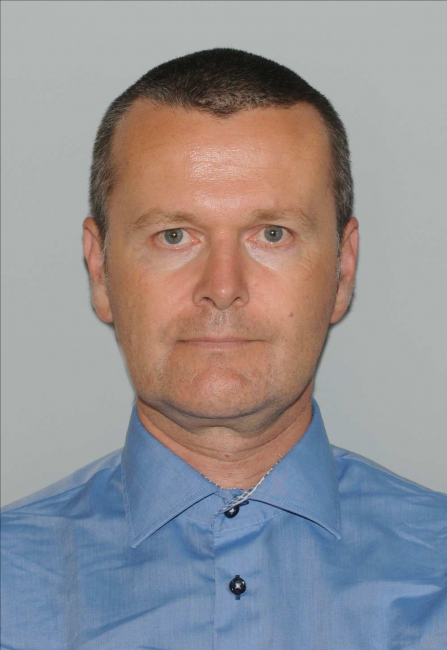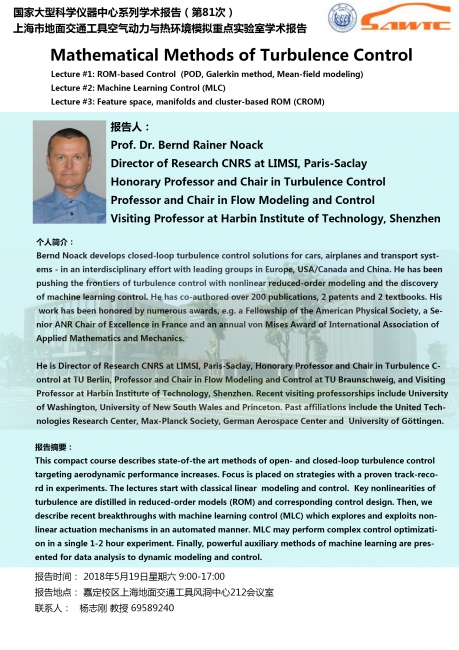国家大型科学仪器中心系列学术报告(第81次)
上海市地面交通工具空气动力与热环境模拟
重点实验室学术报告
报告题目:Mathematical Methods of Turbulence Control
Lecture #1: ROM-based Control (POD, Galerkin method, Mean-field modeling)
Lecture #2: Machine Learning Control (MLC)
Lecture #3: Feature space, manifolds and cluster-based ROM (CROM)
报 告 人:Prof. Dr. Bernd Rainer Noack
Director of Research CNRS at LIMSI, Paris-Saclay
Honorary Professor and Chair in Turbulence Control at TU Berlin
Professor and Chair in Flow Modeling and Control at TU Braunschweig
Visiting Professor at Harbin Institute of Technology, Shenzhen
报告日期:2018年5月19日星期六 9:00-17:00
报告地点:嘉定校区上海地面交通工具风洞中心212会议室
联 系 人:杨志刚教授 电话69589240

个人简介:
Bernd Noack develops closed-loop turbulence control solutions for cars, airplanes and transport systems - in an interdisciplinary effort with leading groups in Europe, USA/Canada and China. He has been pushing the frontiers of turbulence control with nonlinear reduced-order modeling and the discovery of machine learning control. He has co-authored over 200 publications, 2 patents and 2 textbooks. His work has been honored by numerous awards, e.g. a Fellowship of the American Physical Society, a Senior ANR Chair of Excellence in France and an annual von Mises Award of International Association of Applied Mathematics and Mechanics.
He is Director of Research CNRS at LIMSI, Paris-Saclay, Honorary Professor and Chair in Turbulence Control at TU Berlin, Professor and Chair in Flow Modeling and Control at TU Braunschweig, and Visiting Professor at Harbin Institute of Technology, Shenzhen. Recent visiting professorships include University of Washington, University of New South Wales and Princeton. Past affiliations include the United Technologies Research Center, Max-Planck Society, German Aerospace Center and University of Göttingen.
报告摘要:
This compact course describes state-of-the art methods of open- and closed-loop turbulence control targeting aerodynamic performance increases. Focus is placed on strategies with a proven track-record in experiments. The lectures start with classical linear modeling and control. Key nonlinearities of turbulence are distilled in reduced-order models (ROM) and corresponding control design. Then, we describe recent breakthroughs with machine learning control (MLC) which explores and exploits nonlinear actuation mechanisms in an automated manner. MLC may perform complex control optimization in a single 1-2 hour experiment. Finally, powerful auxiliary methods of machine learning are presented for data analysis to dynamic modeling and control.
欢迎广大教师和学生参加!



 语言:
语言: